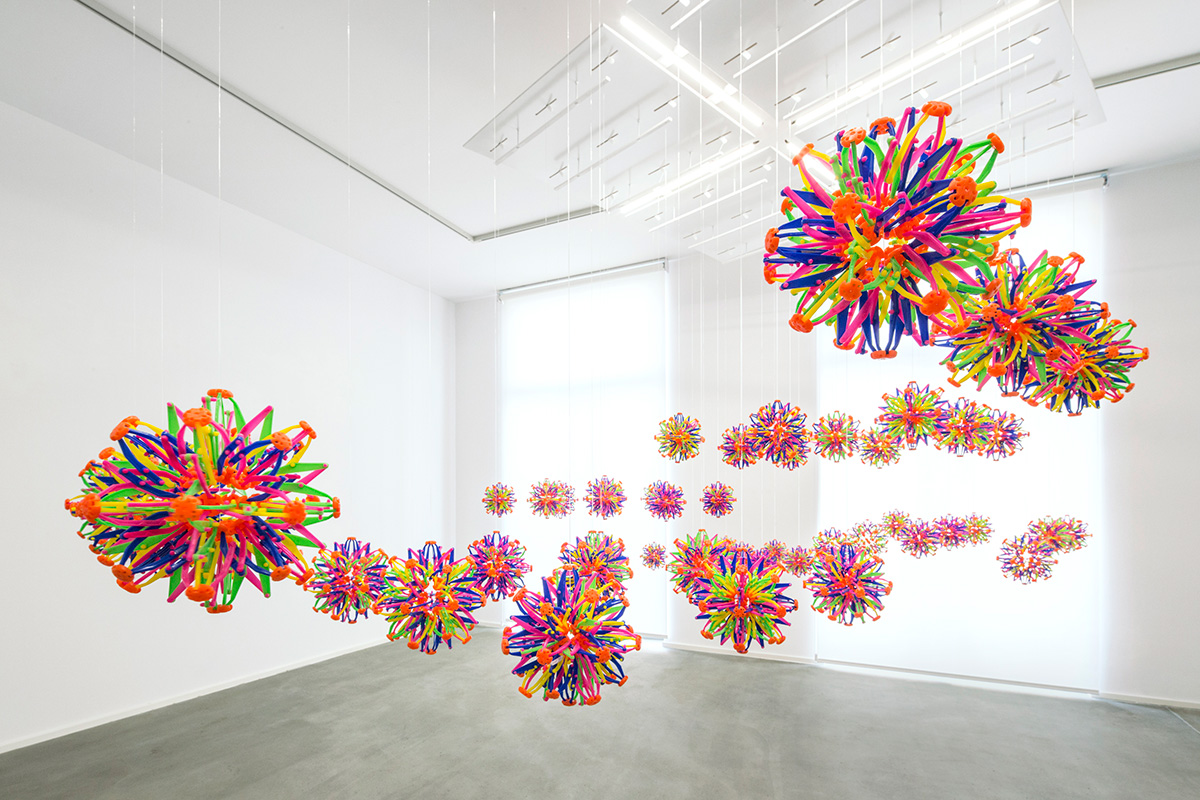
Nils Völker, Bits and Pieces, 2016. At NOME Gallery. Photo by Bresadola+Freese/drama-berlin.de
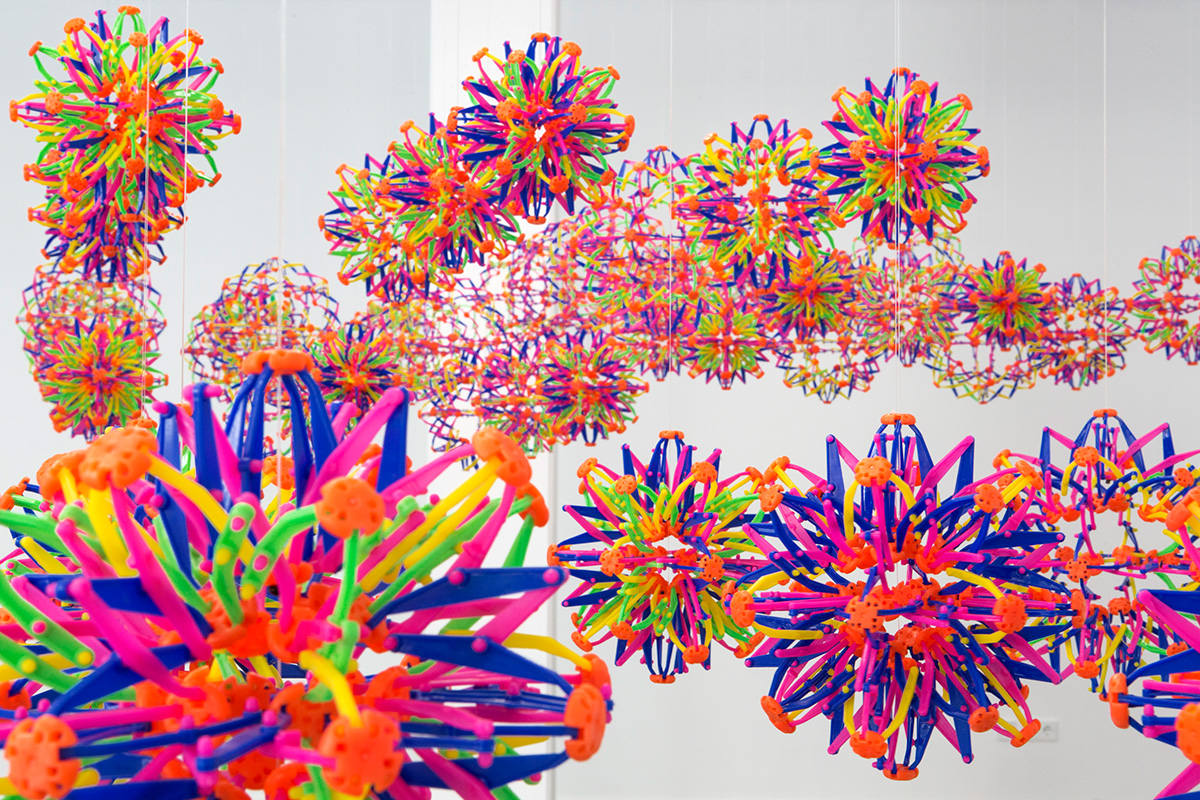
Nils Völker, Bits and Pieces, 2016. At NOME Gallery. Photo by Bresadola+Freese/drama-berlin.de
Plastic is everywhere: it’s used to 3D print pretty much anything, it wraps our food and books, invades our oceans, is ingested by animals, and because there’s some karma in the world after all, it travels up the food chain and we end up consuming it too. Once in a while however, comes an artwork that gives the much-maligned material some nobility by reminding us of its inherent beauty and pliability.
Bits and Pieces, a work on view for a few more days at the NOME gallery in Berlin, consists of a single sculpture made out of 108 motorized spheres that open and close in orchestrated rhythms. The structure evokes blooming flowers, children toys, or swarms of insects that float above your head and seem to be instilled with a life of their own.
Nils Völker, Bits and Pieces, 2016
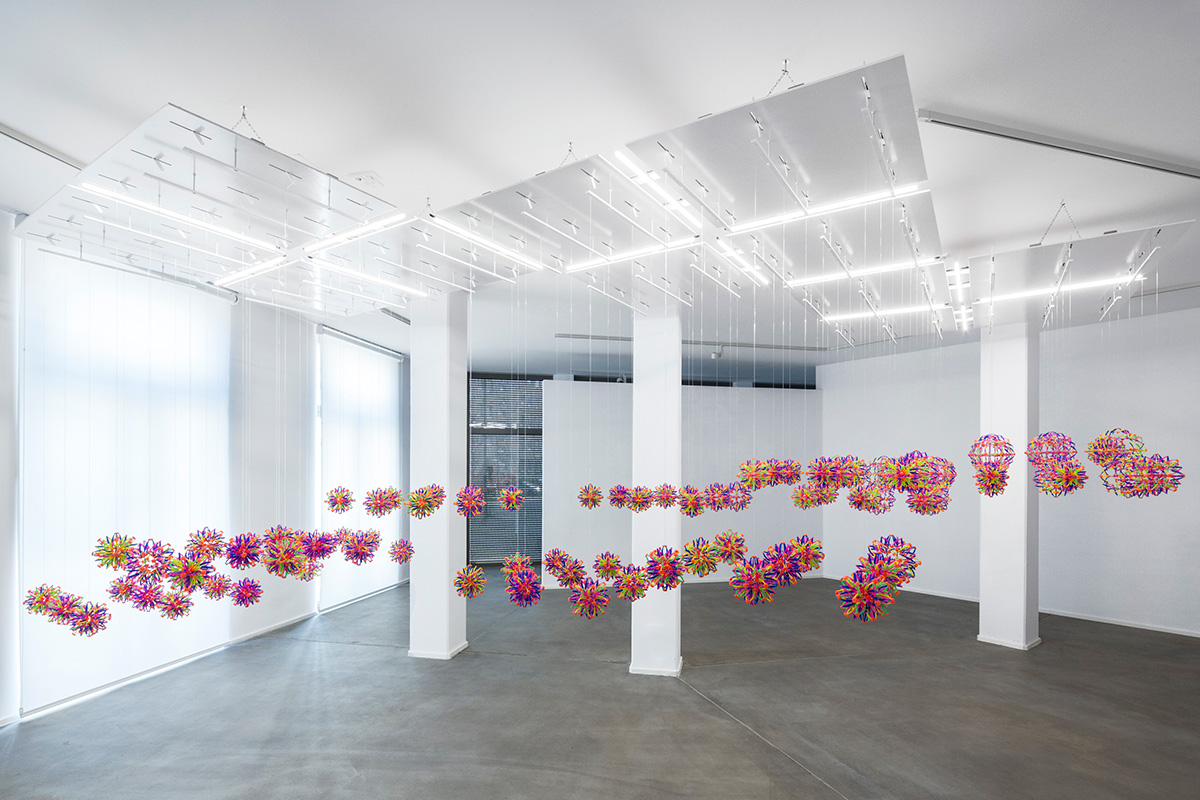
Nils Völker, Bits and Pieces, 2016. At NOME Gallery. Photo by Bresadola+Freese/drama-berlin.de
The artist behind this multicoloured magic trick is Nils Völker. I recently caught up with him over emails:
Hi Nils! You’re showing a new installation at the NOME Project gallery. Could you tell us about it?
It consists mainly out of very colorful toy balls, so-called Hoberman Spheres. These balls are hanging in different heights in the middle of the space and constantly open and close in a controlled rhythm. So it looks like a large wave flowing through the space and it appears pretty dynamic although each of the toy balls remains in place and just opens and closes at the right time.
From what i see on the NOME page there won’t be any inflatable. I love inflatables. Please don’t say you got bored of inflatables…
But apart from that, how different is the piece from your other works?
No, you’re right, since a while it’s actually the first work which doesn’t inflate anything. But don’t worry I will surely continue to experiment in this area and create new installations made from inflating/deflating cushions. It’s pretty surprising how many variations in shape and material you can realize. For the last one at the Taipei Fine Arts Museum for example I used an extraordinary type of blue-white plastic canvas which I haven’t seen before in my life but you see it really everywhere in the streets in Taiwan.
Nils Völker, Twelve, 2016
I think on the first sight the new installation is of course quite different from my previous ones. But it is also made out of many more or less everyday objects, each doing the exact same thing and the programming leads to a surprisingly dynamic and organic movement through the space. Similar to my previous works is maybe that when you look at one of those objects isolated it’s pretty ordinary but if you have many of them synchronized it gets pretty fascinating and mesmerizing.
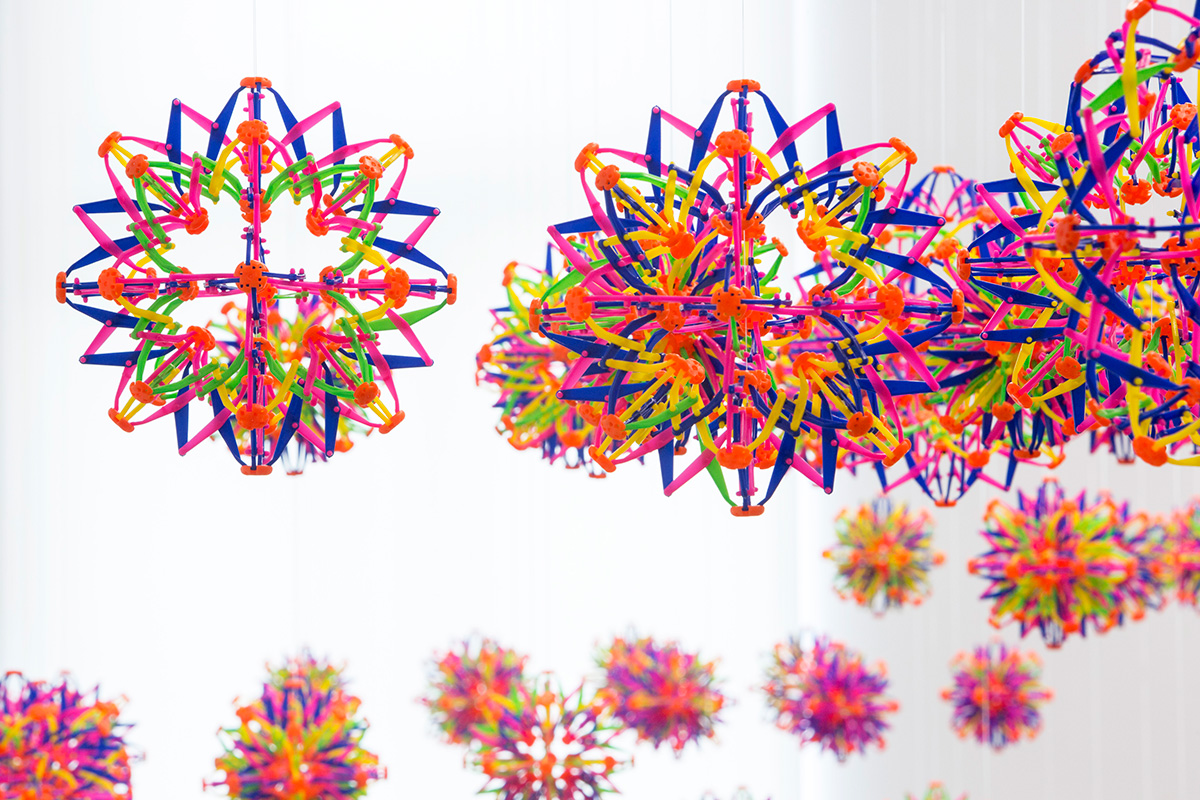
Nils Völker, Bits and Pieces, 2016. At NOME Gallery. Photo by Bresadola+Freese/drama-berlin.de
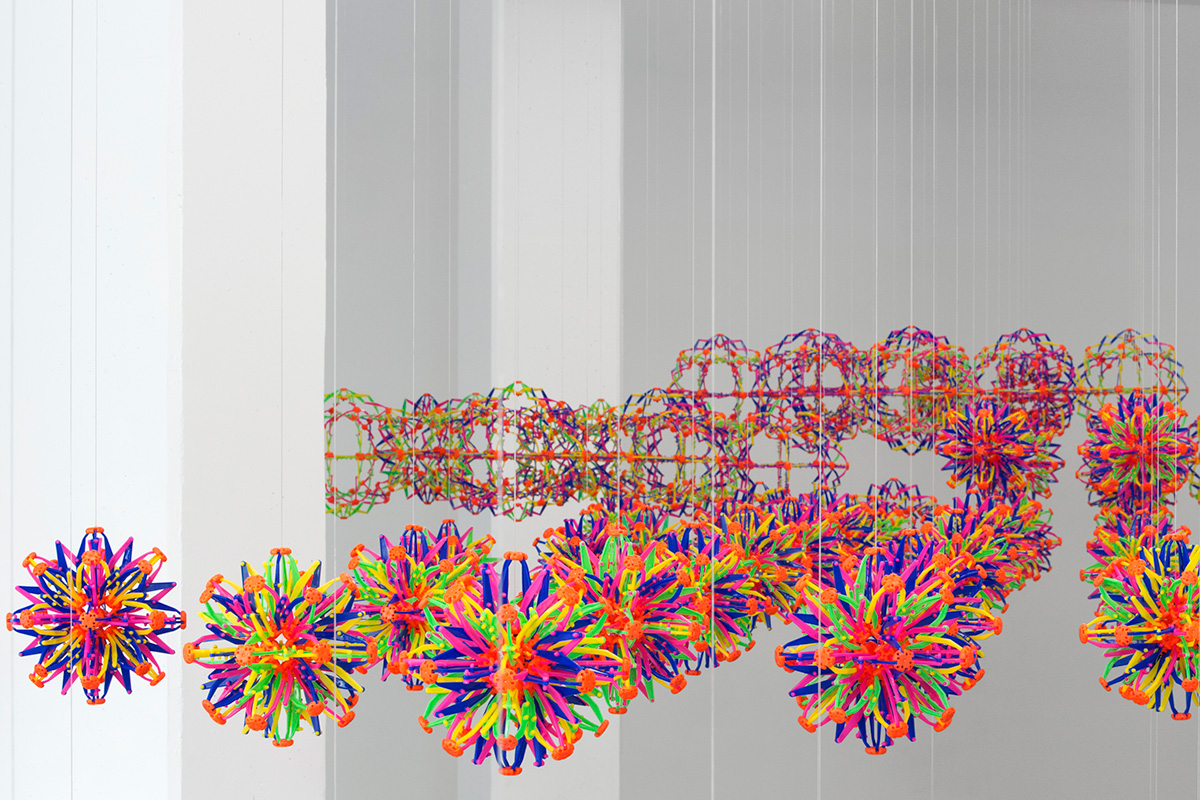
Nils Völker, Bits and Pieces, 2016. At NOME Gallery. Photo by Bresadola+Freese/drama-berlin.de
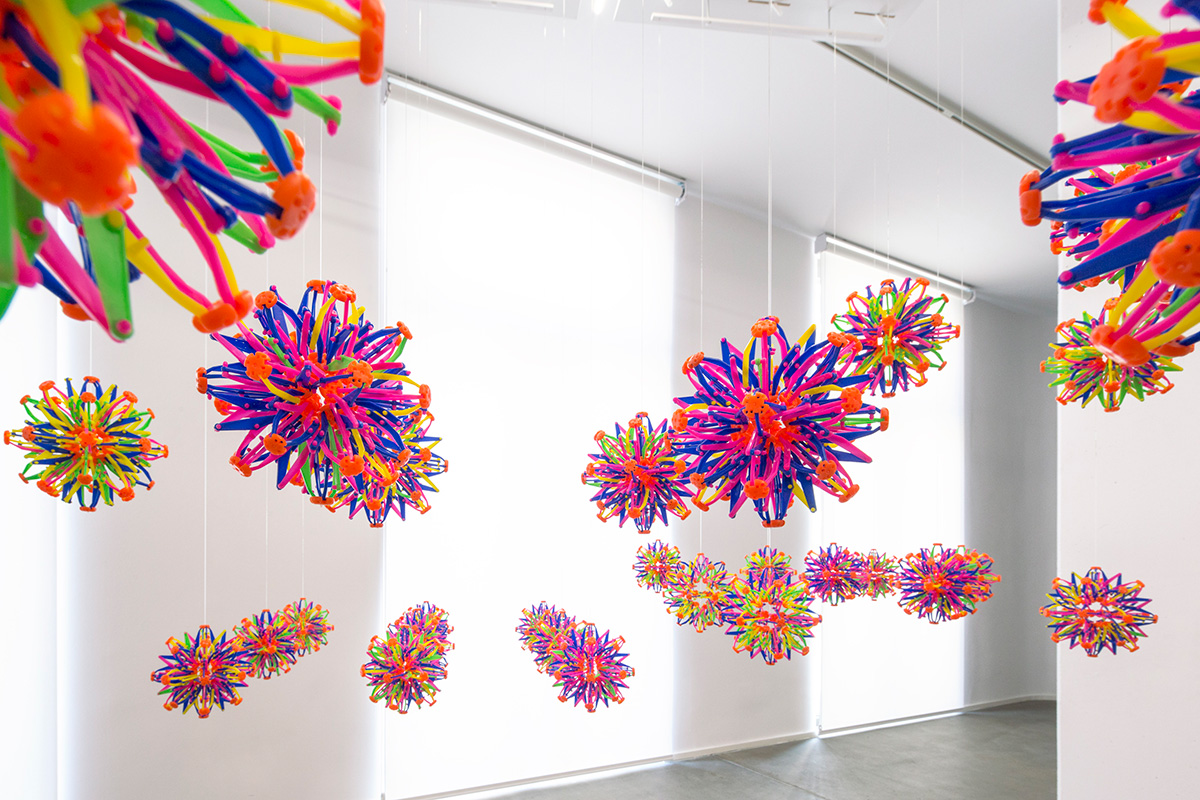
Nils Völker, Bits and Pieces, 2016. At NOME Gallery. Photo by Bresadola+Freese/drama-berlin.de
I’d also be interested to hear about the material you use. You’ve worked with garbage bags, lego parts and now plastic objects. Why this interest for the ordinary materials? Are you never tempted to work with super fancy parts and materials?
Surprisingly not much. I think Luca Barbeni, the director of the gallery, saw as well the opportunities in the early prototype I made a while ago and from that point he gave me a huge leap of faith and we both focused merely on realizing the best possible setup for his gallery space.
I’m not really sure why exactly I’m attracted by this kind of materials. Maybe it’s because they are boring on the first sight and usually overlooked by most people. But if you have a closer look at a simple garbage bag for example it is surprising how the material crumples and makes this sizzling noise. I also like when people still can somehow understand what is going on and how it works. It might make it even more compelling when you use such ordinary things. From fancy, unknown materials you’d rather expect fancy and unknown behavior.
And similarly, would you say that the technology you use to create your installation is ‘ordinary’ as well? Or do you think you need to use sophisticated software, tools and systems to give some nobility to humble materials?
Well, I think this is mainly a question of the perspective. To some people it looks pretty much like rocket science and a few years ago I actually thought the same when I saw things like that. But in the end I’m only using knowledge you can gain from the internet and with a few years of tinkering. And with every new project I still learn a lot of new things about the hard- and software and keep on improving my skills.
Any upcoming project, event, or field of research you could share with us?
There is a very nice upcoming exhibition at La Gaité Lyrique in Paris called Extra Fantômes which opens on the 7th of April. And besides I’m looking forward to catch up on some ideas and prototypes which I paused working on during the past weeks.
Thanks Nils!
Bits and Pieces is at the NOME Project gallery until 15 april 2016.
